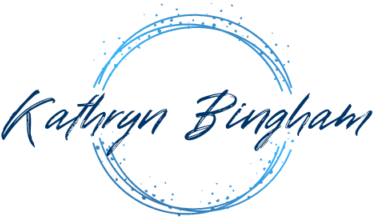Happiness at Work: Achievable? Yes

Fulltime employees may spend a minimum of 2,000 hours in the workplace annually. Imagine the difference in impact and productivity between spending those hours being even moderately miserable versus joyfully inspired. According to author Kris Boesch, “When people feel good about coming to work it ripples into the community, into the homes and coffee shops and the parks and the ball fields. When people are happy at work, they are better parents, spouses, volunteers and citizens. When we make the workplace better, we make the world better.” This post introduces Boesch’s new book, Culture Works: How to Create Happiness in the Workforce.
Written for Leaders and Managers of Teams
In writing Culture Works, Boesch seeks to reach leaders and managers of teams with the intention and commitment to develop and nurture workplaces where employees feel inspired, valued, and good about the contributions they and their teams make. Companies have the opportunity to transform the environment in ways that shift an employee’s perception from “it’s just a job or paycheck” to one of loving to come to work and be a part of the collective mission of the organization.
Boesch shares the mission and vision for her company: “Choose People’s mission is to increase joy in the workplace. Our vision is to shift the national conversation around work from one of woe to one of joy.” The effort to craft a mission and vision—especially one that is both aspirational, but achievable in three years—may seem cliché. Having the right language is worth the effort, assures Boesch.
Culture Works is set up much like a field manual.
Leaders who have some kind of cultural problem can solve it, Boesch reports. Facing issues such as “gossip, or apathy, or silos, or culture comparison, or [intergenerational issues], or baggage that no one will let go of …, or more meaningful recognition, or a performance review process that’s more meaningful”—a reader can review applicable content and related solutions.
The text is organized to help leaders understand the foundations and levers for increasing happiness in the workplace. Focused topics include the ROI of happy employees; the foundations of mission, vision, and values; meaning, momentum, and money; shared identity and interdependency; accountability; trust; kind, candid, and constructive communication; relationships; creating culture conducive to change; and so forth. Each section includes information, exercises to support assessment or shape new cultural elements, and implementation ideas for fostering a positive culture.
Core concepts: Known, Matter, Included
Central to all the other pieces advocated by Boesch are the concepts of assuring each member of a team is known, matter, and included. Knowing involves moving beyond the superficial to know who the person is, what he or she values, and the contributions she or he bring to the team and the organization. It’s understanding that that person Matters; what he or she does is important, when he or she contributes excellence (or slacks), there’s an impact. Inclusion recognizes the value contributed by the thoughts and ideas of all members as a collective asset. Boesch indicates many of the tactical actions of Culture Works, feed these core concepts.
Leading with Courage
One thing that struck me in reading Culture Works is the courage required of leaders facing cultural challenges they find. Boesch offers a wonderful analogy of imagining a leader’s team in a rowboat and identifying what’s happening through this imaginary lens, for example:
- Are any team members not actually rowing? Passengers = dead weight.
- A rower working hard in the wrong direction.
- A new team member trying to learn rhythm.
The book includes several other images, such as rowers who want to jump ship, or even push others out of the boat.
In response, Boesch indicates leaders have the “honor, responsibility, and authority” to take the actions that will support the boat and it’s full compliment of rowers to work together, in cadence, to achieve the collective goal. Leaders must assess the competencies, contributions, integrity, values, and other attributes of participants and use honest, candid communication to facilitate needed change.
Include the How
It’s not enough, as an example, for a leader to share with a team member that he or she needs to demonstrate “a more positive attitude.” Even when the employee might agree, or say he or she has heard the feedback previously, the boss can’t walk away. The missing piece, Boesch suggest, involves the leader taking the time to support the employee in the “how” of his or her blind spot. Beyond the “what” of what’s wrong and the impact of those behaviors, the “how” helps a team member see what difference looks like, sounds like, or feels like, and enables the successful transformation through suggested tools, scripts, techniques, and coaching. Does the person need to make an apology, to facilitate being seen with fresh eyes by his or her colleagues? How will accountability be built in? We are not done as leaders until we have integrated the full solution for both the individual and the team.
One simple technique for leaders to take a pulse of his or her organization is what Boesch calls the “temperature” check. Instead of asking the standard hallway “how are you,” Boesch suggests the phrase, “On a scale of 1-10, how are you (or how are things going for you)?” Over time, the leader will get a sense of what a person’s number is, as well as recognize when one person’s “5” is like another’s “8.” At the same time, the leader has the opportunity to dig deeper when the number is lower. Conversely, when the number is modest (5, 6, or 7), the leader can inquire, “what would make that a plus-one?” This simple change offers data the leader can act on and create engagement around.
Boesch positions Culture Works as an investment. While many companies may leverage the benefit of working with a consulting group like her company Choose People, Boesch wanted to enable organizations to succeed at a fraction of the cost of a full consultation. She’s filled the book with a wealth of her knowledge and experience, and sets up leaders and managers of teams or organizations to create and maintain successful, positive workplace cultures. Culture Works: How to Create Happiness in the Workplace is available on Amazon in Kindle format ($69) or a physical book for $79. A companion workbook is priced at $159. This tool set allows a leader and team to work through and document several cultural improvements to achieve increased happiness in the workplace.
Do you have or contribute to an awesome culture in your workplace? If not, what barriers do you face in elevating your leadership to overcome cultural issues? Share your thoughts or reach out to Dr. Kathryn Bingham by clicking here.
Thank you for visiting Dr. Kathryn Bingham’s blog! We invite your discussion at LEADistics’ community page. Fans and honest critics are welcomed! Please see our Comments Policy and reuse Permissions on the FAQ page. All posts are covered by copyright law, with all rights reserved.
Social Share
Recent Posts
LeadUP! Juana Bordas
This LeadUP! Conversation features Dr. Juana Bordas, president of Mestiza Leadership International and author of newly updated The Power of Latino Leadership (listen or watch here). Bordas shares how her immigrant experience shaped her leadership. [...]
Power of the Pivot
The idea seems simple. When something isn’t working, just change. Shift. Adapt. But our brain sabotages the effort. We’re convinced that if we just do better or try harder with our current path or process, [...]
LeadUP! Andrea DeWitt
In this LeadUP! episode, Dr. Kathryn Bingham and author Andrea DeWitt talk about her new book, Name, Claim & Reframe and how individuals can step into their power, their potential, and their truth. Both the [...]





